Q1
By using a compass needle describe how can you demonstrate that there is a magnetic field around a
current-carrying conductor.
solutions

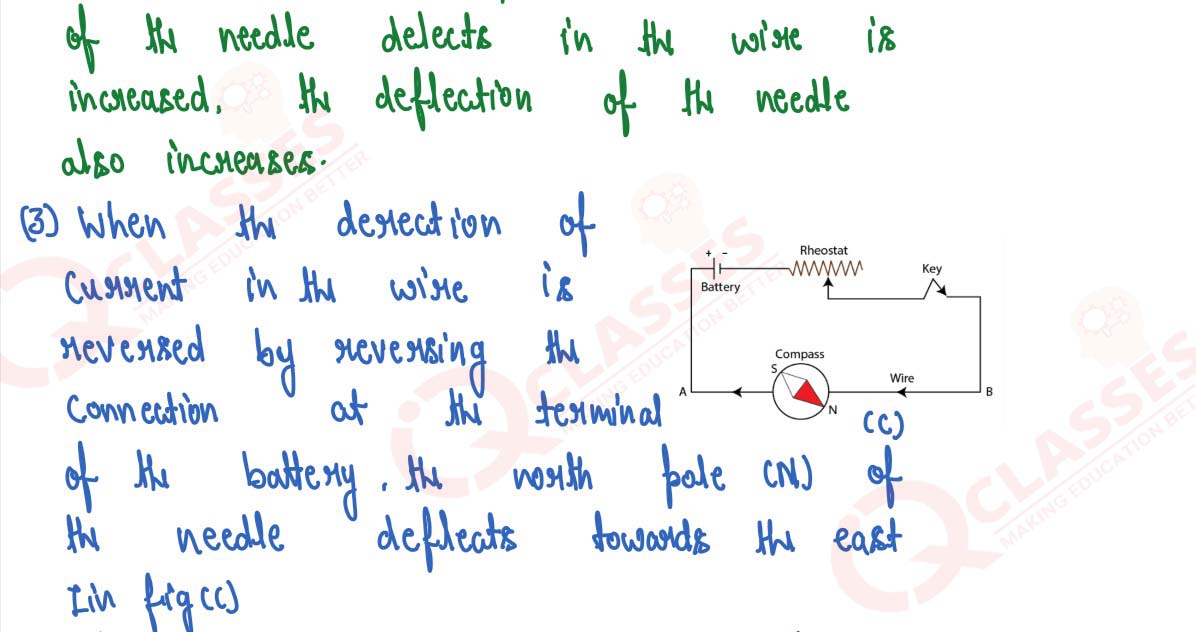
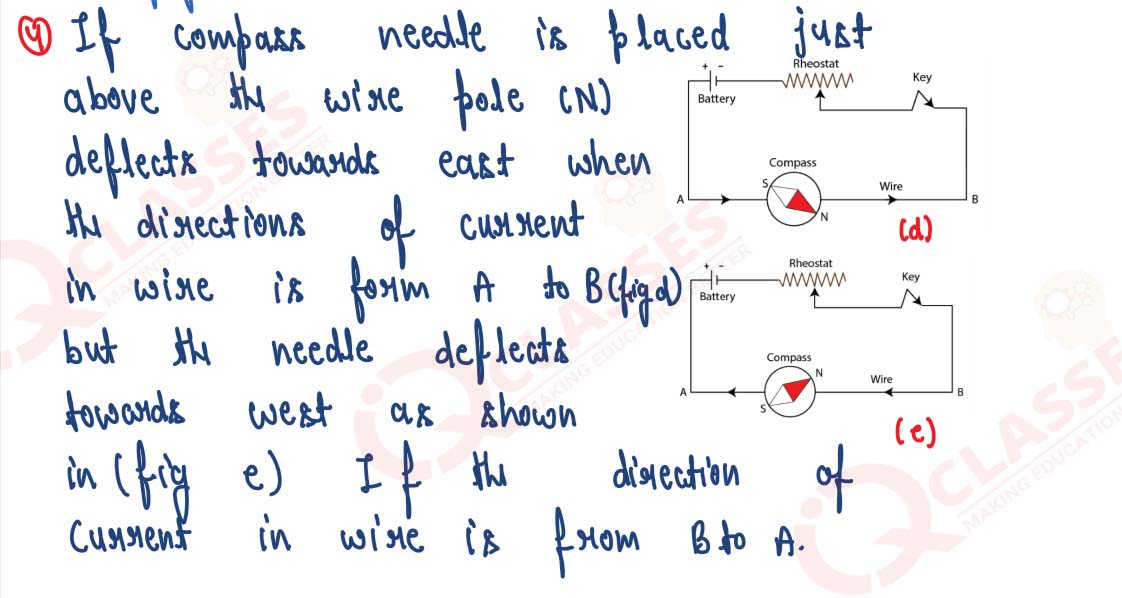

solutions





Q2
Draw a diagram showing the direction of three magnetic field lines due to a straight wire carrying a
current. Also show the direction of current in the wire.
solutions
solutions

Q3
How is the magnetic field due to a straight current-carrying wire affected if current in the wire is
(a) decreased, (b) reversed?
solutions
solutions

Q4
state a law, which determines the direction of the magnetic field around a current-carrying wire.
solutions
solutions

Q5
A straight wire lying in a horizontal plane carries a current from north to south.
(a) What will be the direction of the magnetic field at a point just underneath it?
(b) Name the law used to arrive at this answer in part (a).
solutions
(a) What will be the direction of the magnetic field at a point just underneath it?
(b) Name the law used to arrive at this answer in part (a).
solutions

Q6
What will happen to a compass needle when the compass is placed below a wire with needle parallel to
it and a current is made to flow through the wire? Give a reason to justify your answer.
solutions
solutions

Q7
Draw a labelled diagram showing the three magnetic field lines of a loop carrying current. Mark the
direction of current and the direction of the magnetic field by arrows in your diagram.
solutions
solutions

Q8
A wire, bent into a circle, carries a current in an anticlockwise direction. What polarity does this
face of the coil exhibit?
solutions
solutions

Q9
What is the direction of the magnetic field at the centre of a coil carrying current in (i) the
clockwise, (ii) the anticlockwise, direction?
solutions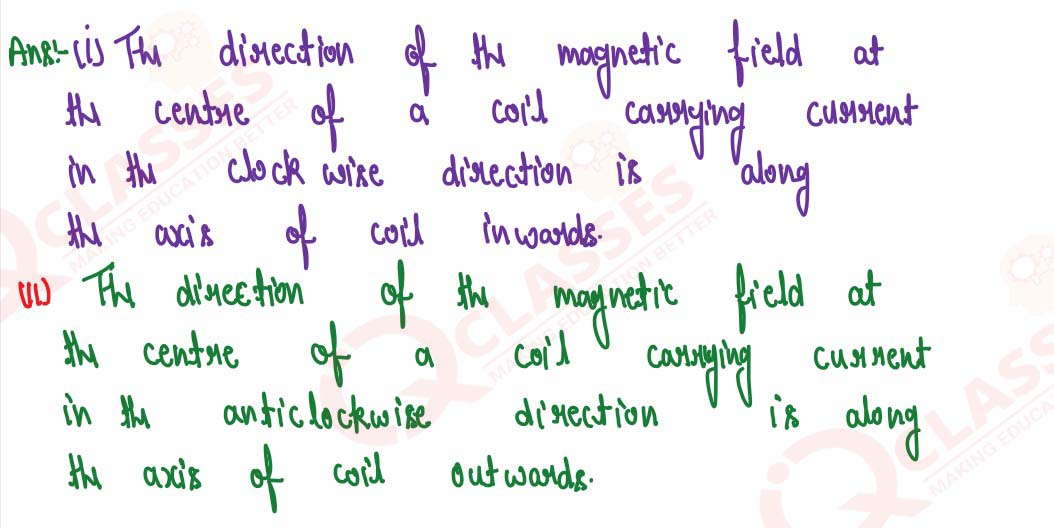
solutions

Q10
Draw a diagram to represent the magnetic field lines along the axis of a current-carrying solenoid.
Mark arrows to show the direction of current in the solenoid and the direction of magnetic field
lines.
solutions
solutions

Q11
Name and state the rule by which the polarity at the ends of a current carrying solenoid is
determined
solutions
solutions

Q12
The diagram in the figure shows a small magnet placed near a solenoid AB with its north pole N near
the end A. Current is switched on in the solenoid by pressing the key K.
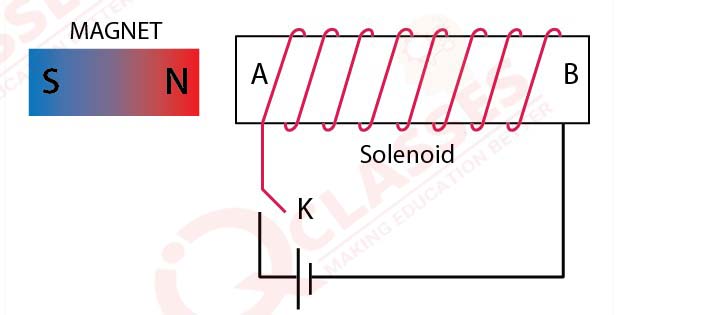
(a) State the polarity at the ends A and B.
(b) Will the magnet be attracted or repelled? Give a reason for your answer.
solutions

(a) State the polarity at the ends A and B.
(b) Will the magnet be attracted or repelled? Give a reason for your answer.
solutions

Q13
The diagram shows a spiral coil wound on a hollow cardboard tube AB. A magnetic compass is placed
close to it. Current is switched on by closing the key.
(a) What will be the polarity at the ends A and B?
(b) How will the compass needle be affected? Give reason.
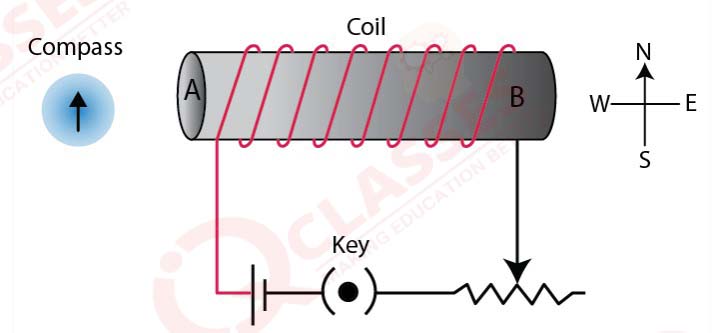
solutions
(a) What will be the polarity at the ends A and B?
(b) How will the compass needle be affected? Give reason.

solutions

Q14
State two ways by which the magnetic field due to a current-carrying solenoid can be made stronger.
solutions
solutions

Q15
Why does a current-carrying freely suspended solenoid rest along a particular direction? State the
direction in which it rests.
solutions
solutions

Q16
What effect will there be on a magnetic compass when it is brought near a current-carrying solenoid?
solutions
solutions

Q17
How is the magnetic field due to a solenoid carrying current affected if a soft iron bar is
introduced inside the solenoid?
solutions
solutions

Q18
Complete the following sentences:
(a) When current flows in a wire, it creates ____________
(b) On reserving the direction of current in a wire, the magnetic field produced by it gets _____.
(C)A current carrying solenoid behaves like a _________.
(D)A current-carrying solenoid when freely suspended, it always rest in __________ direction.
solutions
(a) When current flows in a wire, it creates ____________
(b) On reserving the direction of current in a wire, the magnetic field produced by it gets _____.
(C)A current carrying solenoid behaves like a _________.
(D)A current-carrying solenoid when freely suspended, it always rest in __________ direction.
solutions

Q19
You are required to make an electromagnet from a soft iron bar by using a cell, an insulated coil of
copper and a switch. (a) Draw a circuit diagram to represent the process. (b) Label the poles of the
electromagnet.
solutions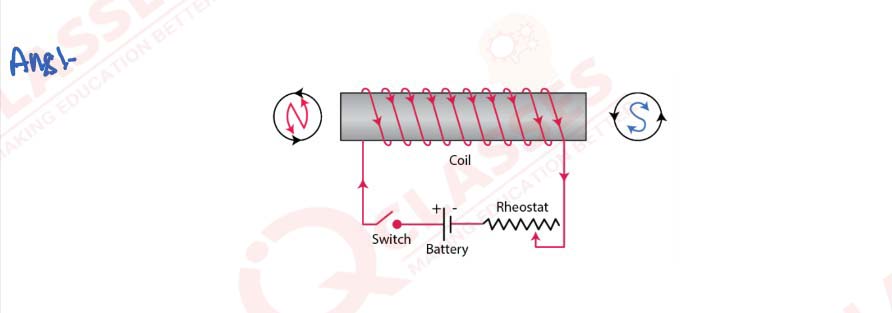
solutions

Q20
The diagram in the figure shows a coil wound around a soft iron bar XY. (a) State the polarity at
the end X and Y as the switch is pressed. (b)Suggest one way of increasing the strength of
electromagnet so formed.
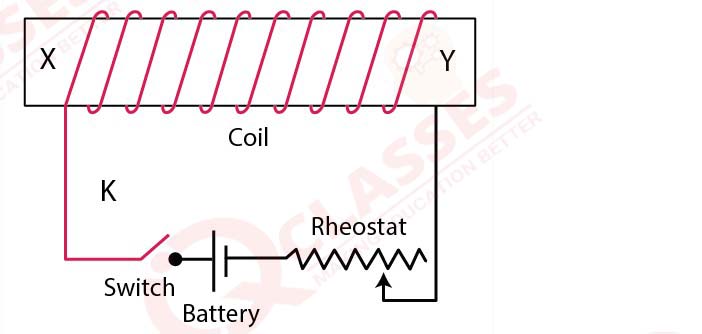
solutions

solutions

Q21
(a) What name is given to a cylindrical coil of diameter less than its length?
(b) If a piece of soft iron is placed inside the coil mentioned in part (a) and current is passed in the coil from a battery, what name is then given to the device so obtained?
(c) Give one use of the device mentioned in part (b).
solutions
(b) If a piece of soft iron is placed inside the coil mentioned in part (a) and current is passed in the coil from a battery, what name is then given to the device so obtained?
(c) Give one use of the device mentioned in part (b).
solutions

Q22
Show with the aid of a diagram how a wire is wound on a U-shaped piece of soft iron in order to make
it an electromagnet. Complete the circuit diagram and label the poles of the electromagnet.
solutions
solutions

Q23
What is an electromagnet? Name two factors on which the strength of the magnetic field of an
electromagnet depends and state how does it depend on the factors stated by you.
solutions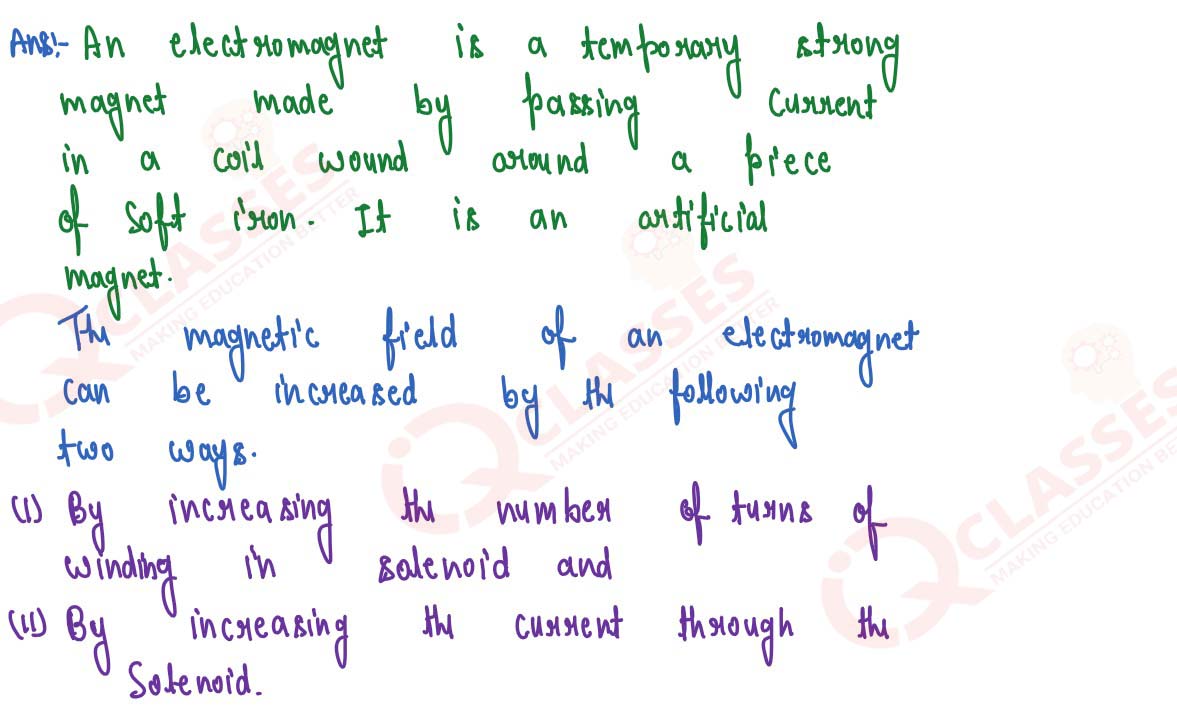
solutions

Q24
Figure shows the current flowing in the coil of wire wound around the soft iron horseshoe core. (a)
State the polarities developed at the ends A and B.
(b) How will the polarity at the ends A and B change on reversing the direction of current?
(c) Suggest one-way increase the strength of magnetic field produce.
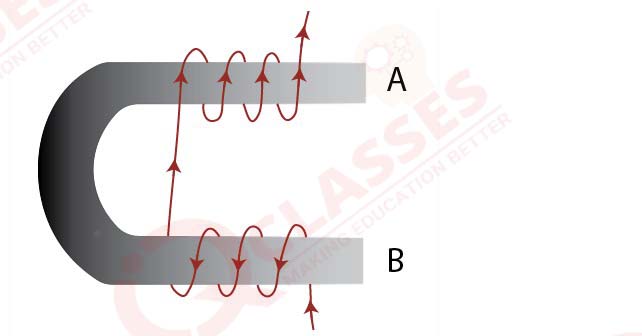
solutions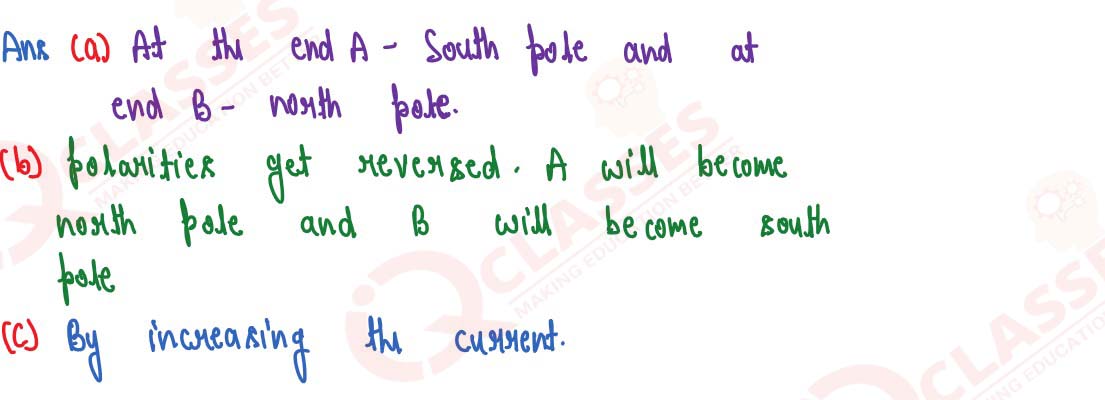
(b) How will the polarity at the ends A and B change on reversing the direction of current?
(c) Suggest one-way increase the strength of magnetic field produce.

solutions

Q25
State two ways through which the strength of an electromagnet can be increased.
solutions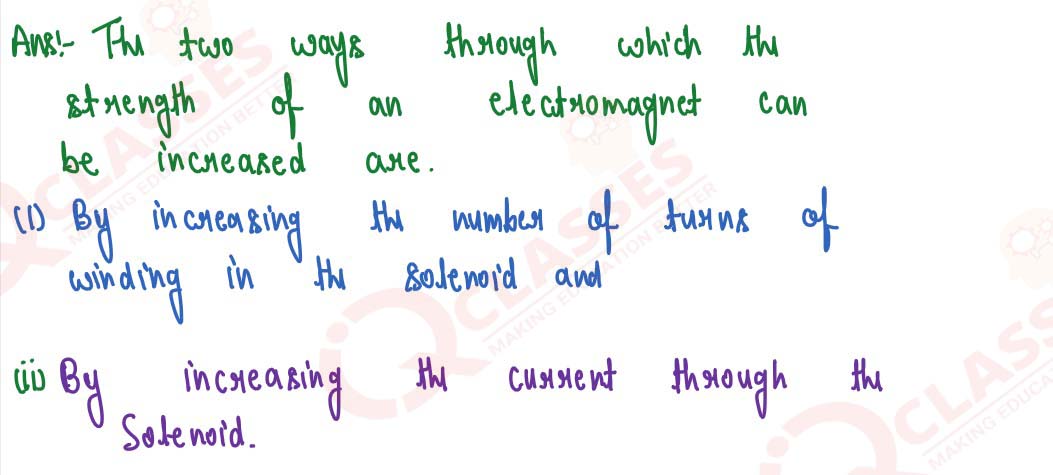
solutions

Q26
Name one device that uses an electromagnet.
solutions
solutions

Q27
State two advantages of an electromagnet over a permanent magnet.
solutions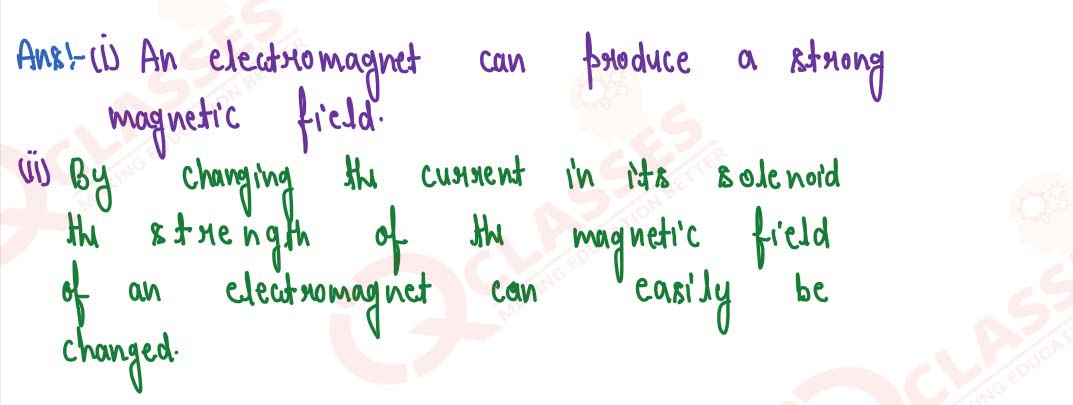
solutions

Q28
State two differences between an electromagnet and a permanent magnet.
solutions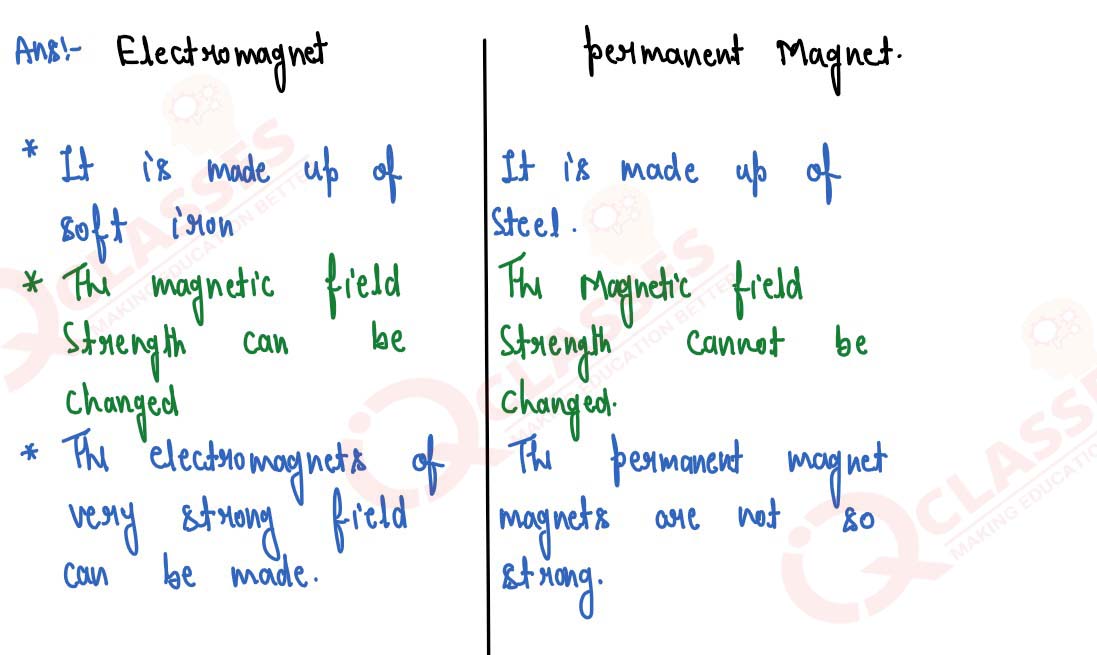
solutions

Q29
Why is soft iron used as the core of the electromagnet in an electric bell?
solutions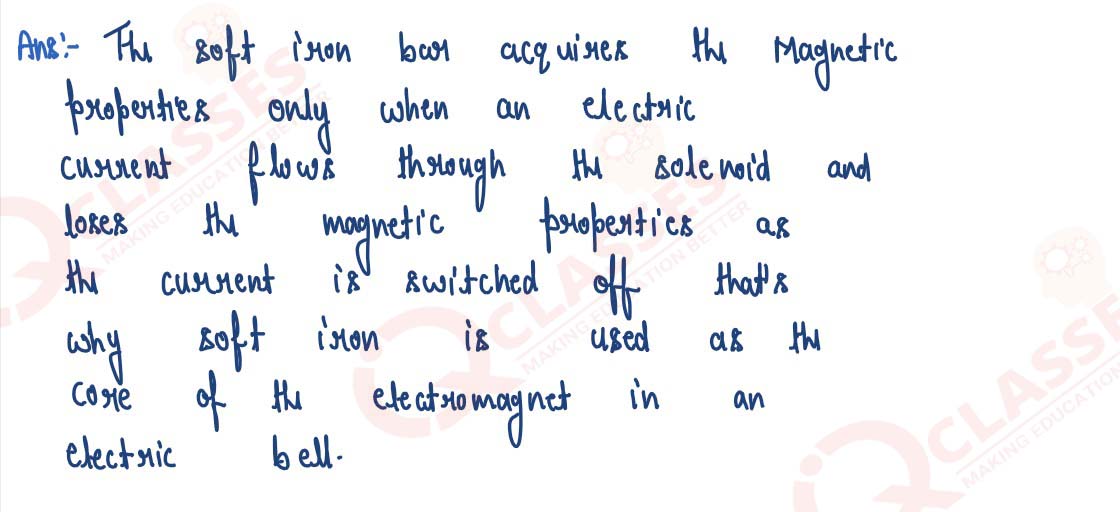
solutions

Q30
How is the working of an electric bell affected, if alternating current be used instead of direct
current?
solutions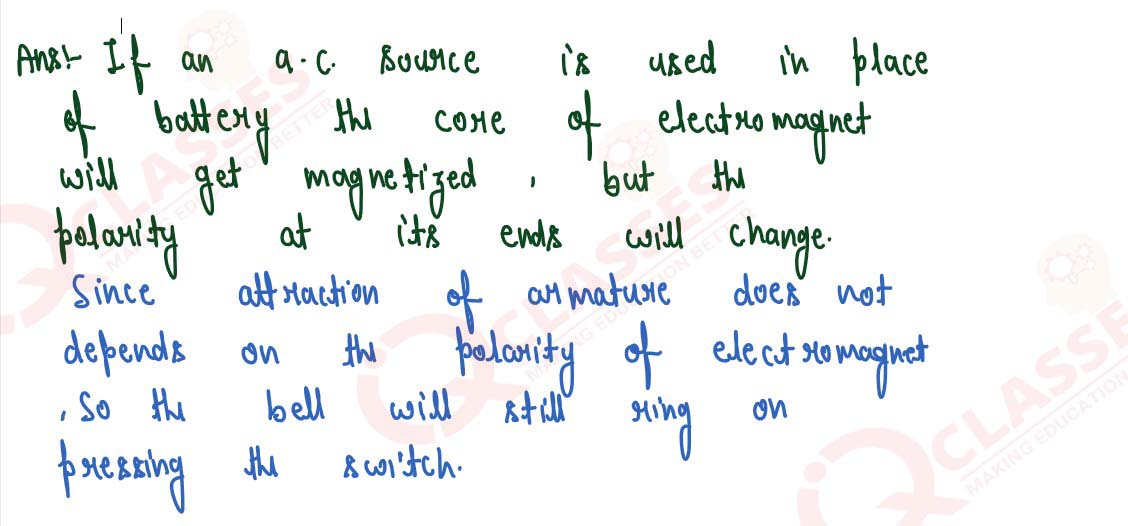
solutions

MULTIPLE CHOICE TYPE (Exercise 8b)
Q1
The presence of the magnetic field at a point can be detected by:
(a) A strong magnet
(b) A solenoid
(c) A compass needle
(d) A current-carrying wire
solutions
(a) A strong magnet
(b) A solenoid
(c) A compass needle
(d) A current-carrying wire
solutions

Q2
On reversing the direction of current in a wire, the magnetic field produced by it:
(a) Gets reversed in direction
(b) Increases in strength
(c) Decreases in strength
(d) Remains unchanged in strength and direction
solutions
(a) Gets reversed in direction
(b) Increases in strength
(c) Decreases in strength
(d) Remains unchanged in strength and direction
solutions
